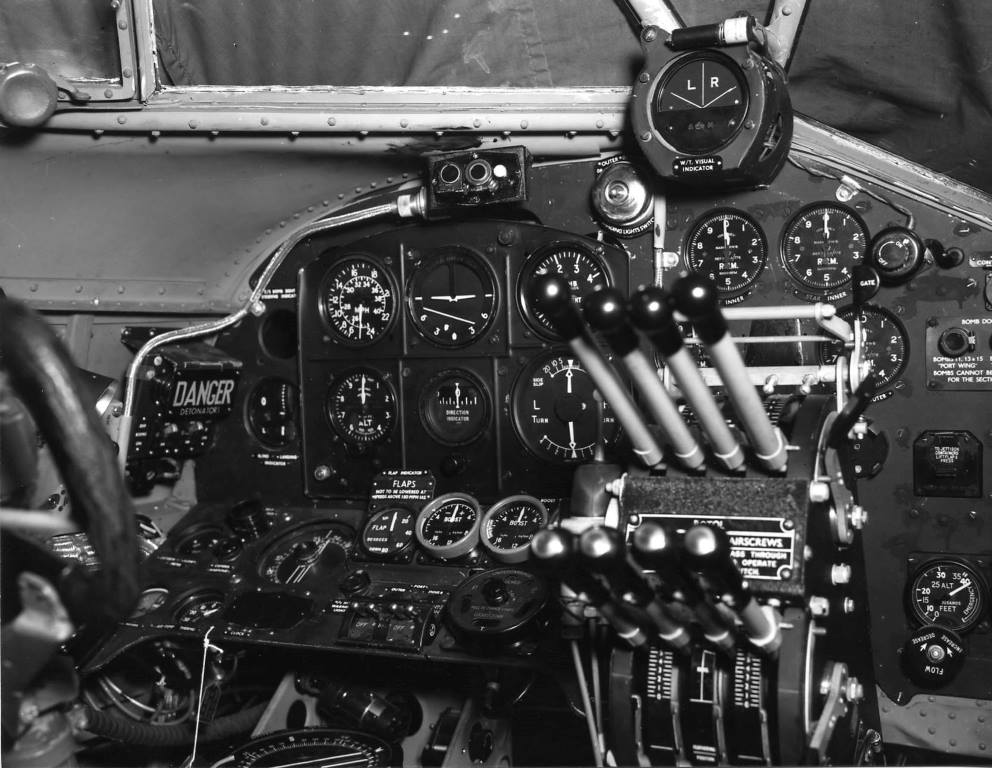One very fitting addition to the museum is the Halifax cockpit section which now sits alongside the Lancaster. The Halifax was the type of aircraft in which Christopher Panton lost his life during the Nuremburg raid in March 1944.
One very fitting addition to the museum is the Halifax cockpit section which now sits alongside the Lancaster. The Halifax was the type of aircraft in which Christopher Panton lost his life during the Nuremburg raid in March 1944.
This reconstruction of the pilot's area of the aircraft was built to original drawings by Cees Broere in Holland and purchased by the museum in January. It arrived in several large pieces with a small set of instructions to help with identifying where parts went and the order of construction. Some of the items fitted to the cockpit are from original aircraft including the control column, rudder pedals, all of the instruments and many of the fittings that are required for operational aircraft.
Due to the undoubted engineering skill of Cees Broere the main parts of the nose section went together very easily as all of the rivet/bolt holes lined up perfectly. The larger sections of the kit included the left and right, forward and rear, fuselage sides; the pilots bulkhead and floor, the glazed area and the base the whole assembly sits on. The pilots instrument panel and throttle box made up the other main parts to be assembled. One thousand seven hundred rivets and many nuts and bolts later the Halifax nose took shape and the process of fitting the instrument panel, pilot's seat, pipe work and electrical cables could start. This work is now complete and the exhibit will in time be repainted to represent the aeroplane that Chris was the Flight Engineer on in 1944.
The design of the Halifax allowed for slightly easier access through the aeroplane to the cockpit and the crew positions were differently arranged compared to the Lancaster. On climbing over the front spar the flight
Engineer's position on the left would be the first crew station to see. The flight engineer would be stood, facing rearwards, directly behind the pilot with a bulkhead between them. Moving forward, the pilot's seat is on the left and there is a step down to the wireless operator's position; he sat directly beneath the floor that the pilot's seat is mounted on. On from there is the navigator's position, front gunner and bomb aimer area in the nose of the aeroplane. There is more space inside the Halifax compared to the Lancaster, however this was at the expense of the bomb load as the Lancaster could carry a larger payload to the target.
Being involved with this project certainly gave me more of an understanding of where Christopher Panton and other crew members would have been when their aircraft was lost on that night in March 1944.
